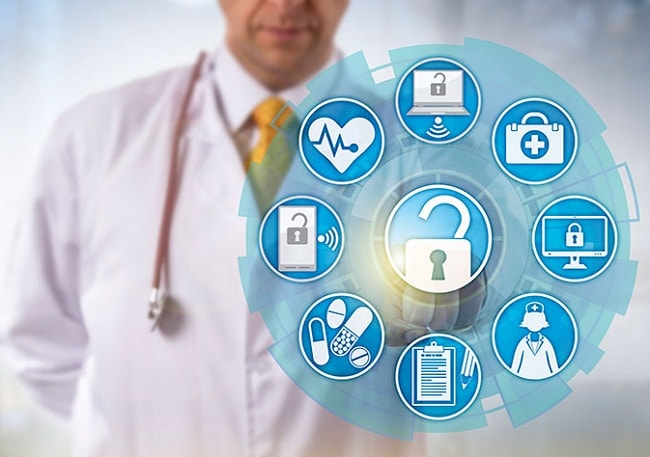Medical devices help patients manage chronic illnesses, allow providers to monitor progress remotely and much more. Like many other products, they also go through changes to meet new requirements or match identified needs in the marketplace. Sometimes, there are industrywide device trends, too.
Here are several things professionals should anticipate regarding medical devices this year:
1. Ongoing Market Growth
The medical device market is thriving, and that’s due in part to things like government initiatives, an increase in chronic disorders and technological improvements. A market research report examined the forecast period from 2019-2024 and expected a combined annual growth rate of 6.3 percent during that timeframe.
Since the findings also showed that the Asia-Pacific region would have the highest growth throughout those years, U.S.-based manufacturers may realize that 2019 is a prime year to make good on intentions for international expansion. 2. A Rise in Direct-to-Consumer Medical Devices
2. A Rise in Direct-to-Consumer Medical Devices
People should also anticipate an increase in medical devices marketed directly to consumers that they can get without needing to visit health professionals. For example, a recently signed agreement allows people to order hearing aids from Sears.com or Kmart.com without making audiologist appointments first.
Also, a company called AliveCor manufacturers a portable EKG machine that captures a medical-grade reading to detect atrial fibrillation in 30 seconds. People only need to press their fingertips to sensors and connect their smartphones to get readings.
Analysts say this trend poses challenges to tackle in numerous ways. For example, doctors need to become more educated about these products and discuss them with patients when relevant. Moreover, regulatory standards must more closely match the direct-to-consumer market. It’ll also help if informational campaigns assist people in understanding the benefits and potential risks of these products.
3. Providers Will Use Devices More Frequently to Track Patient Care Billing
The people who work in facilities that receive Medicare funding know they have to abide by changing billing regulations. For example, the Patient-Driven Payment Model (PDPM) is a new update related to billing for skilled nursing facilities. It takes effect on Oct. 1, 2019, and requires facilities to bill based on a patient’s condition and the resultant care needs rather than the amount given.
Some forward-thinking companies prepared for this change by designing tools that recognize events that trigger PDPM billing. Providers at facilities that use the PDPM now must capture real-time point-of-care documentation. They’ll likely use devices like medical-grade, wall-mounted screens or touch-sensitive tablets to keep track of patient care as it happens.

4. A New Framework for Artificial Intelligence Devices
The U.S. Food and Drug Administration (FDA) is the regulatory agency overseeing medical devices in the United States. In early April 2019, the organization announced it would develop a framework for medical devices that use artificial intelligence (AI) algorithms.
It clarified that AI devices already given market authorization and clearance by the FDA were generally ones using so-called “locked” algorithms that did not learn with each use. This new regulatory framework will target AI devices that learn continually and get smarter with each interaction.
The first step in making this improvement involves releasing a discussion paper. Since that’s only one of numerous milestones along this path, people should realize that this development will undoubtedly span beyond 2019, although the earliest steps may indeed start this year.
5. Progress With Piezoelectric Medical Devices
Since their invention in 1960, pacemakers have been literal lifesavers for people with heart rhythm abnormalities. A major downside is that they’re battery-operated devices, and patients have to undergo operations for the battery replacements. However, researchers published a paper describing how they made a self-powered pacemaker able to regulate a pig’s heart.
It works thanks to piezoelectric materials. They generate electricity in response to mechanical stress.
A press release about the feat described how the researchers created a flexible plastic frame, then attached piezoelectric layers to it. Those additions generate energy when bent. The researchers found that the movement of a beating heart could affect the structure enough to create enough power to equal a battery-operated pacemaker.
In another instance of piezoelectrics used for medical reasons, a research team developed a method of using a 3D printer to make piezoelectric material. Also, it’s a “tunable” substance — meaning engineers could alter the voltage response based on particular needs. Next, the team plans to look for more biologically friendly materials. It believes the 3D-printed material could eventually be added to embedded medical devices.
Neither of these advancements will be ready for mainstream medical use this year, but it’s worth keeping an eye on these developments and similar ones. If piezoelectricity allows internal medical devices to work indefinitely, patients could avoid surgeries for battery replacements, plus the associated complications, such as infections.
Interesting Changes on the Horizon
This overview highlights why people should never view the medical device sector as a stagnant market. It’s growing and evolving to align with patient and provider expectations.
























